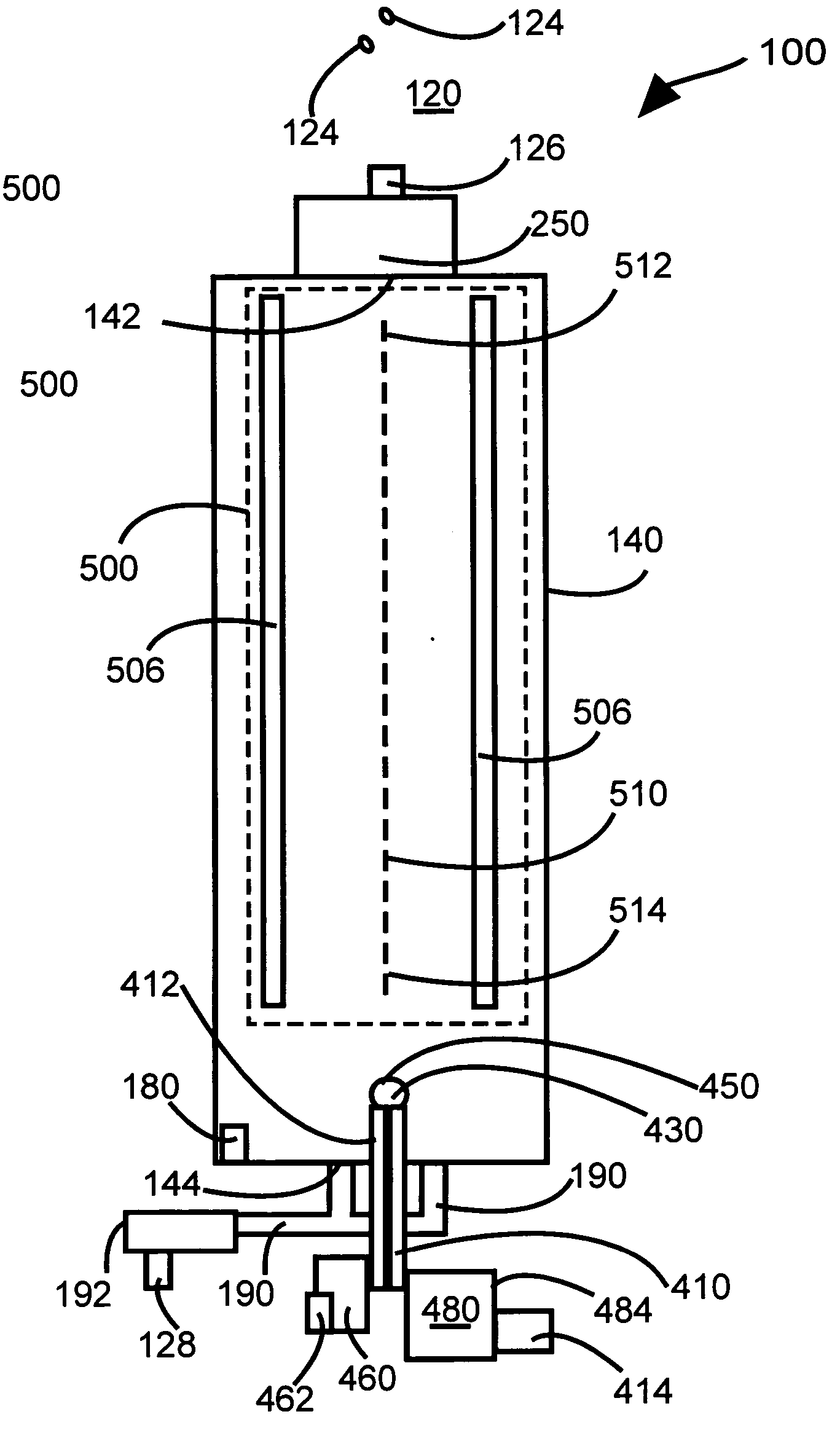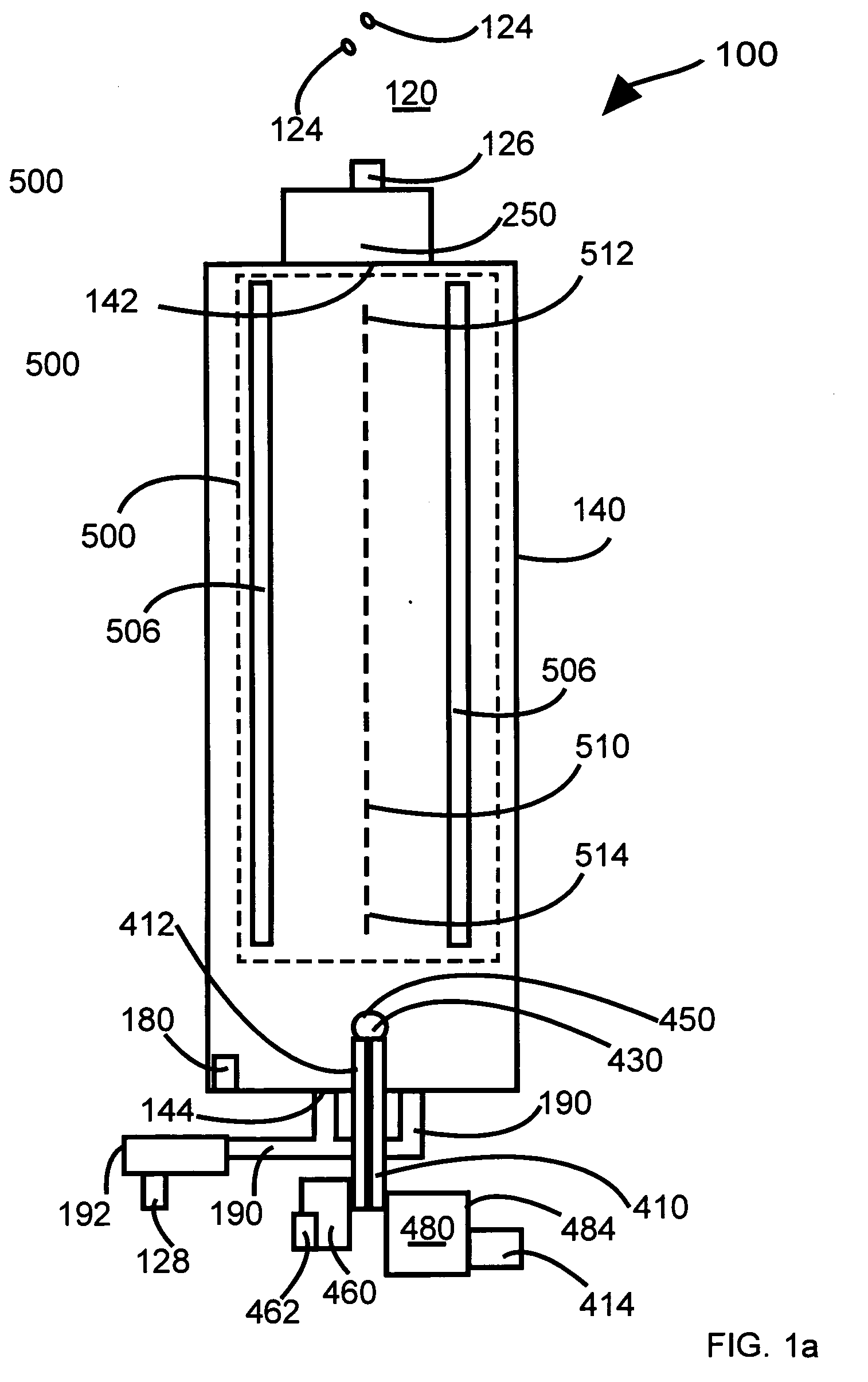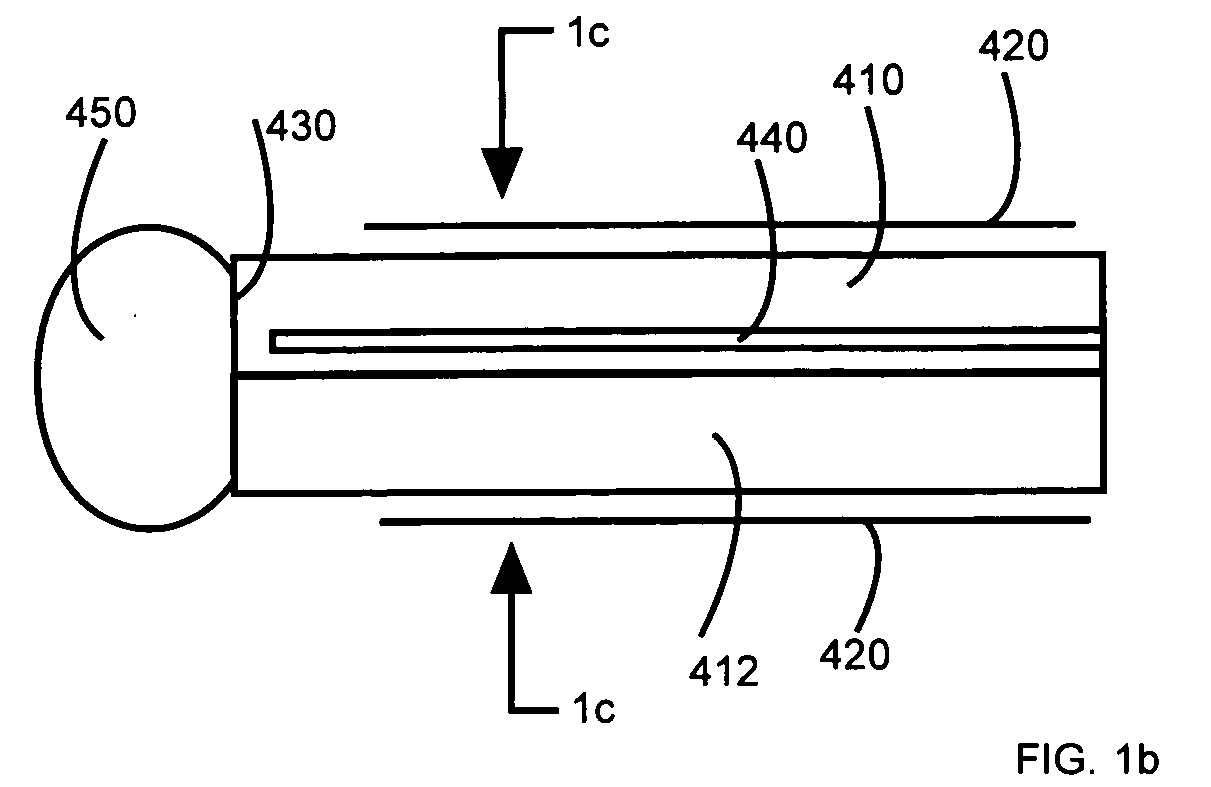Aerosol into liquid collector for depositing particles from a large volume of gas into a small volume of liquid
a technology of liquid collector and gas, which is applied in the direction of particle separator tube, electrostatic separation details, optical radiation measurement, etc., can solve the problem of more complicated methods than required, and achieve the effect of low total requirement of liquid and short time to obtain the measured resul
- Summary
- Abstract
- Description
- Claims
- Application Information
AI Technical Summary
Benefits of technology
Problems solved by technology
Method used
Image
Examples
Embodiment Construction
[0039] Referring to FIG. 1a, FIG. 1b, and FIG. 1c, a preferred embodiment of an aerosol-into-liquid collector (ALC) 100 is immersed in a gas 120, such as the atmosphere, having particles 124 therein. Generally, the particles 124 are of many types. The particles 124 may be liquid, solid, or a mixture of liquid and solid. A collection liquid (CL) 480 is in a collection-liquid reservoir (CLR) 484.
[0040] The collection of the particles 124 into the CL 480 is accomplished as follows. A collection-liquid pump (CLP) 414 that is connected to the CLR 484 pumps the CL 480 into a proximal end of an incoming-section of the collection-liquid tube (ICLT) 410. The ICLT 410 is part of a structure consisting of the ICLT 410 and a parallel outgoing Collection Liquid Tube (ICLT) 412, both with distal end openings, 430 and 432, respectfully. The distal ends of the ICLT 410 and OCLT 412 are aligned such that the openings 430 and 432 are in close proximity. A wire electrode 440 (illustrated in FIG. 1b a...
PUM
| Property | Measurement | Unit |
|---|---|---|
| volume | aaaaa | aaaaa |
| diameter | aaaaa | aaaaa |
| mass | aaaaa | aaaaa |
Abstract
Description
Claims
Application Information
 Login to View More
Login to View More - R&D
- Intellectual Property
- Life Sciences
- Materials
- Tech Scout
- Unparalleled Data Quality
- Higher Quality Content
- 60% Fewer Hallucinations
Browse by: Latest US Patents, China's latest patents, Technical Efficacy Thesaurus, Application Domain, Technology Topic, Popular Technical Reports.
© 2025 PatSnap. All rights reserved.Legal|Privacy policy|Modern Slavery Act Transparency Statement|Sitemap|About US| Contact US: help@patsnap.com



